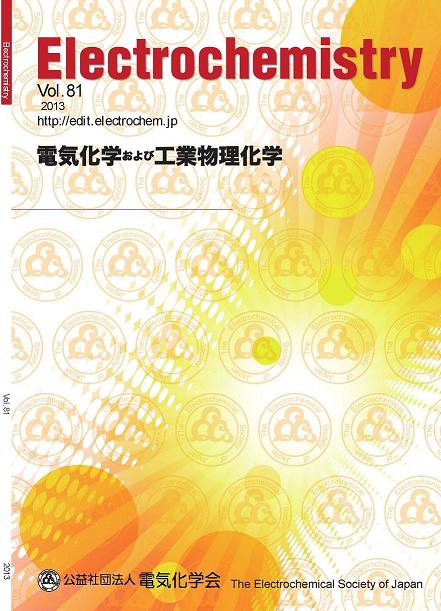Volume 81, Issue 12
Displaying 1-18 of 18 articles from this issue
- |<
- <
- 1
- >
- >|
Preface
-
2013 Volume 81 Issue 12 Pages 953
Published: December 05, 2013
Released on J-STAGE: December 05, 2013
Download PDF (389K)
Articles
-
2013 Volume 81 Issue 12 Pages 954-960
Published: December 05, 2013
Released on J-STAGE: December 05, 2013
Download PDF (2780K) -
2013 Volume 81 Issue 12 Pages 961-965
Published: December 05, 2013
Released on J-STAGE: December 05, 2013
Download PDF (724K) -
2013 Volume 81 Issue 12 Pages 966-970
Published: December 05, 2013
Released on J-STAGE: December 05, 2013
Download PDF (1496K) -
2013 Volume 81 Issue 12 Pages 971-976
Published: December 05, 2013
Released on J-STAGE: December 05, 2013
Download PDF (2758K)
Technological Report
-
2013 Volume 81 Issue 12 Pages 977-980
Published: December 05, 2013
Released on J-STAGE: December 05, 2013
Download PDF (980K)
Note
-
2013 Volume 81 Issue 12 Pages 981-984
Published: December 05, 2013
Released on J-STAGE: December 05, 2013
Download PDF (874K)
Topic
-
2013 Volume 81 Issue 12 Pages 985
Published: December 05, 2013
Released on J-STAGE: December 05, 2013
Download PDF (205K) -
2013 Volume 81 Issue 12 Pages 986-990
Published: December 05, 2013
Released on J-STAGE: December 05, 2013
Download PDF (1703K) -
2013 Volume 81 Issue 12 Pages 991-994
Published: December 05, 2013
Released on J-STAGE: December 05, 2013
Download PDF (1587K) -
2013 Volume 81 Issue 12 Pages 995-1000
Published: December 05, 2013
Released on J-STAGE: December 05, 2013
Download PDF (2932K) -
2013 Volume 81 Issue 12 Pages 1001-1005
Published: December 05, 2013
Released on J-STAGE: December 05, 2013
Download PDF (1895K)
-
2013 Volume 81 Issue 12 Pages 1006-1011
Published: December 05, 2013
Released on J-STAGE: December 05, 2013
Download PDF (948K)
Salon
-
2013 Volume 81 Issue 12 Pages 1012-1013
Published: December 05, 2013
Released on J-STAGE: December 05, 2013
Download PDF (911K) -
2013 Volume 81 Issue 12 Pages 1014-1015
Published: December 05, 2013
Released on J-STAGE: December 05, 2013
Download PDF (1694K)
-
2013 Volume 81 Issue 12 Pages 1016-1017
Published: December 05, 2013
Released on J-STAGE: December 05, 2013
Download PDF (1293K)
-
2013 Volume 81 Issue 12 Pages 1018-1025
Published: December 05, 2013
Released on J-STAGE: December 05, 2013
Download PDF (1111K) -
2013 Volume 81 Issue 12 Pages 1038
Published: December 05, 2013
Released on J-STAGE: December 27, 2023
Download PDF (430K)
- |<
- <
- 1
- >
- >|
